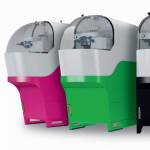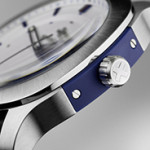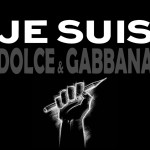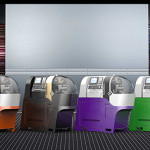The Swiss Army knife: At the sharp end of everyday life
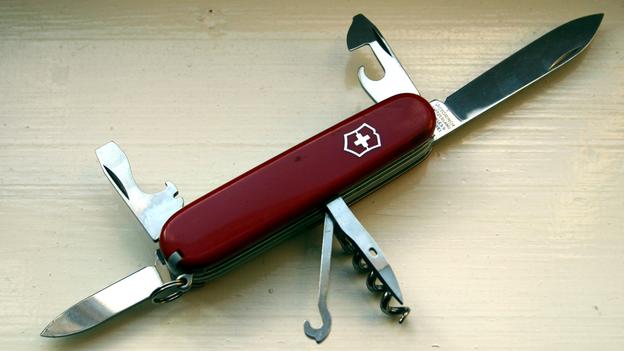
The famous pocket knife has infinite uses – and looks good, too. Jonathan Glancey recalls his happiest moments with a lifelong companion and ultimate classic.
It was one of those seemingly perfect English days. Warm, blues skies adorned with fluffy white clouds, skylarks ascending, sheep safely grazing; all these, and a picnic carried to the perfect spot in a pair of slightly scuffed classic cars. But, in the haste to catch the sun, the following had been forgotten: corkscrew, tin opener and a cracked hose in the increasingly hot radiator of a friend’s Sunbeam Alpine.
Yes, my Swiss Army knife tackled all three, opening welcome bottles and cans and even helping to fashion a temporary radiator hose. And that was just one afternoon in the life of a long-lived design classic that I aim never to be parted from.
Like many people, I really do use my Swiss Army knife every day. It has lit fires, groomed dogs, sawn through wood, trimmed nails, cleaned mud from boots, unscrewed plugs, cut wire, trimmed hair, made toys, and even removed a sharp stone from a horse’s hoof. Given this versatility and longevity, it seems astonishing that its manufacturer Victorinox makes any money at all.
This year, my Swiss Army knife and I are celebrating our silver anniversary. Perhaps I am being a little over sentimental about a small piece (or assembly of pieces) of stainless steel – folded into a red plastic case and stamped with a silver cross – that fits into the palm of my hand. And, yet, I am sure that I am just one of many people around the world who treasure their Swiss Army knives.
Lifelong companion
It is not just because this tiny classic of industrial design is so very useful that so many of us have been so very fond of it over so many years, but it is also because we live in an increasingly throwaway world and, reassuringly, the Swiss Army knife – “guaranteed for life” – never needs replacing. It is the perfect combination of form and function. Mine boasts 18 tools, among them a tiny ballpoint pen that doubles up as an implement to prod and poke with. When I lost it, the Victorinox shop in London’s Bond Street replaced it within seconds, with a smile, and for free.
Not only has the Swiss Army knife been around in recognisable form since 1897 – when Karl Elsener, a Swiss manufacturer of surgical equipment, took out a patent for his Officer’s and Sports Knife – but it is also still made at Ibach in Switzerland; it would surely lose much of its mystique if it were made anywhere else.
The Officer’s and Sports knife was based on a slightly earlier design, the Modell 1890, made in Germany for the Swiss Army. Elsener took over production soon afterwards, and then improved it. The name he gave to his company – Victorinox – was a conflation of Victoria, after his mother, and “inox”, an abbreviation of “acier inoxydable”, French for stainless steel. Elsener had barely got into his stride, however, when a rival Swiss company, bought early on by Theodore Wenger, began making a very similar design. From 1908, the Swiss Army bought both the “Original Swiss Army Knife” from Victorinox and the “Genuine Swiss Army Knife” from Wenger, splitting its orders equally between the two companies. These merged in 2005 when Victorinox acquired Wenger.
Both varieties of knife remain in production, while the company (owned by a family trust) remains in the hands – and under the direction – of the Elseners. Their factory at Ibach is the largest of its kind in Europe, producing 60,000 Swiss Army knives a day. In recent years, Victorinox has expanded profitably into the manufacture of domestic knives, luggage, clothing and fragrance.
Into the future
Its latest and most advanced knives feature laser pointers, flash drive and Bluetooth. There are knives, too, with tools designed to repair computers, knives in a rainbow of fashionable colours – although the original red is hard to beat – and a brand new knife with a softer aesthetic, although the blades are just as hard, named Tomo. This is the work of the Japanese designer, Kazuma Kamaguchi. In Japanese, Tomo means friend or companion, and this tiny knife – packaged in bright colours, among them lemon, pink and mint green, and enclosing a blade, nail file, scissors, and nail cleaner – slips prettily into purses, handbags and delicate pockets. Sheathed in a leather case, Tomo is sold in tiny containers made of the same recyclable paper pulp as egg boxes.
Swiss soldiers themselves are not expected to carry a Tomo in their rucksacks. For the past five years they have been issued with the Victorinox Soldatenmesser 08 knife, a superb multi-purpose tool that can be used with just one hand, no matter what it is asked to do.
I would like one, but as my Swiss Army knife is fully expecting to soldier on to our golden anniversary, I think I should stick with what I know to be, unreservedly, one of the all-time classics of workaday design.
Source: www.bbc.com


